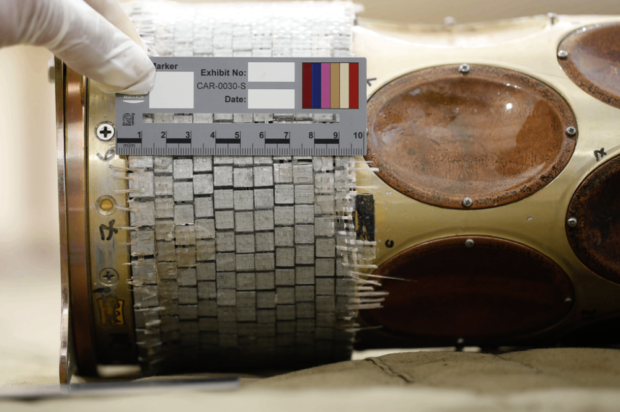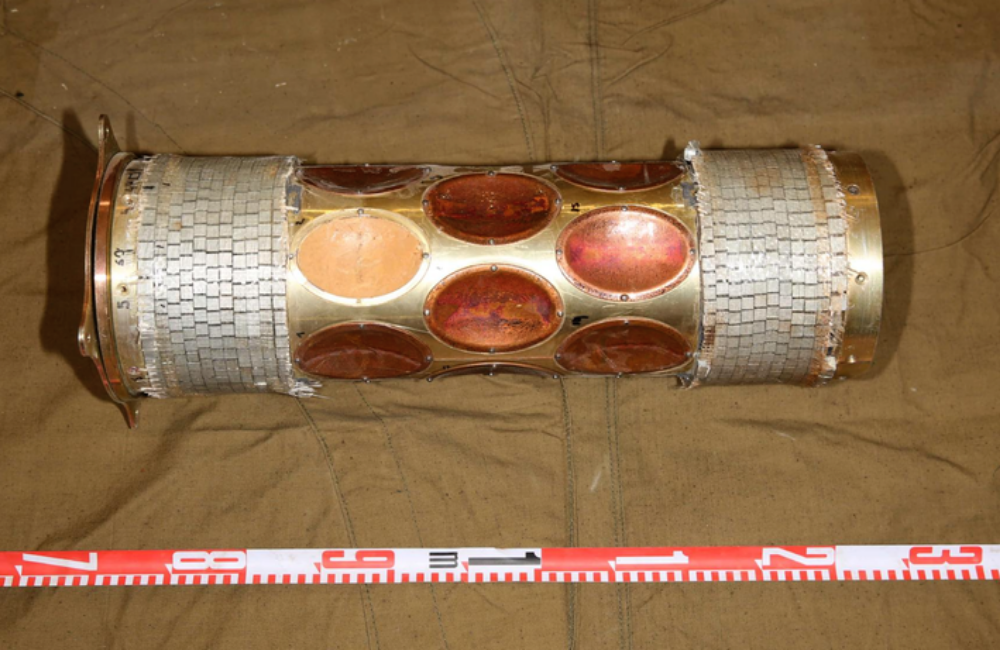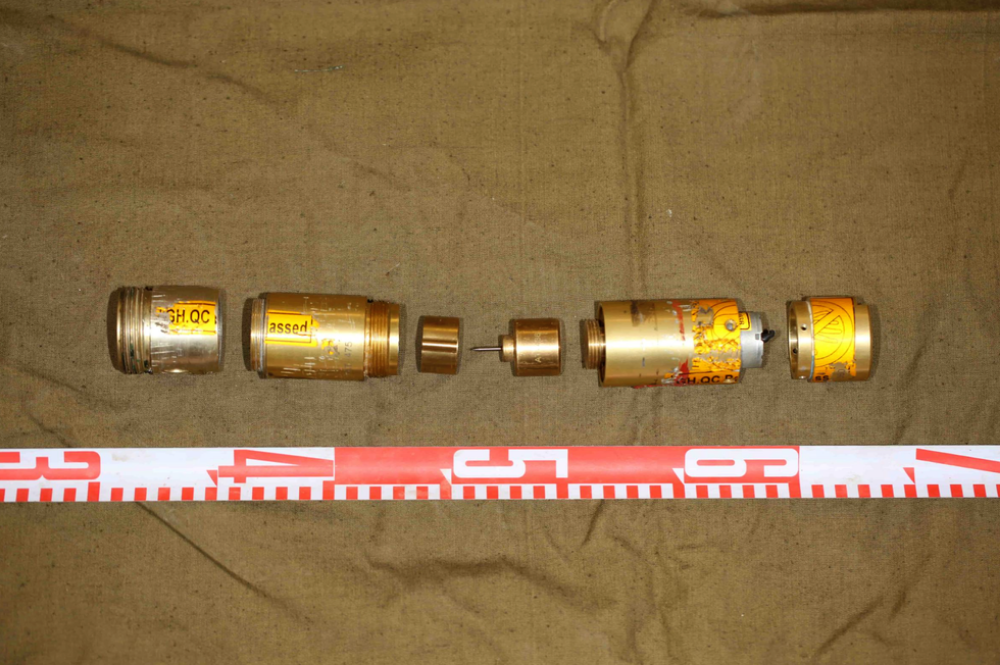Russia is bombarding Ukraine’s electricity infrastructure with hundreds of one-way attack drones in an attempt to shut down the power grid and freeze Kyiv into submission. Investigators who took apart one of the Shahed-131 drones supplied by Iran—the Russians have rebranded it as Geran-1 —discovered a surprisingly sophisticated, multifunctional warhead.
“This multipurpose warhead was designed to ensure maximum damage to targets such as critical infrastructure, while also having a significant impact on the ability to undertake quick repair efforts,”
according to a new report this month from investigators at Conflict Armament Research (CAR), a U.K.-based non-governmental organization that “identifies and tracks conventional weapons and ammunition in contemporary armed conflicts.”
The report is based on a January 2023 field investigation that documented the warhead of an Iranian Shahed-131 single-use unmanned aerial vehicle (UAV). According to CAR, “this is the first time that analysis of these warheads has been released in the public domain.”
Damien Spleeters, deputy director of operations at CAR, was careful to tell Popular Mechanics that the organization is not certain the warhead was specifically designed to destroy electricity distribution gear, but that it was highly effective in this role.
Right now, we can only say we have seen different types of warhead designed to serve different targets,” Spleeters says.
The version examined—a warhead approximately 5 ½ inches in diameter and 20 inches long—is a complex engine of destruction with no less than four different lethal mechanisms. Between them, they create a variety of effects to ensure maximum damage.
The most obvious component is the high-explosive core (Spleeters declined to comment on the specific type of explosive used). On their own, explosives are not a great weapon (for reasons we’ll get into below), but they are unrivaled in damaging buildings and other structures. Shockwaves can flatten walls, rather than just pockmarking them. The Shahed-131 warhead, while a fraction of the size of a cruise missile, is still powerful enough to demolish a small building.
The nose of the warhead is a hollow copper cone set into the explosive, the open end pointing forward. This is a shaped charge, referred to in military circles as “HEAT,” short for “High-Explosive Anti-Tank.” When the warhead detonates, the thin copper is blasted inward, focusing it into a narrow, high-speed jet of metal, capable of punching through steel. This jet travels at several miles per second: it is the fastest thing on Earth outside of a particle accelerator.
HEAT warheads are typically used in anti-tank weapons. The U.S. Hellfire missile, which has a similar-sized warhead to the Shahed, can penetrate over 30 inches of armor plate and destroy the heaviest tank. This type of warhead is much less effective against bunkers and buildings, as the narrow jet will injure the occupants of one room with high-speed fragments but has little effect otherwise.
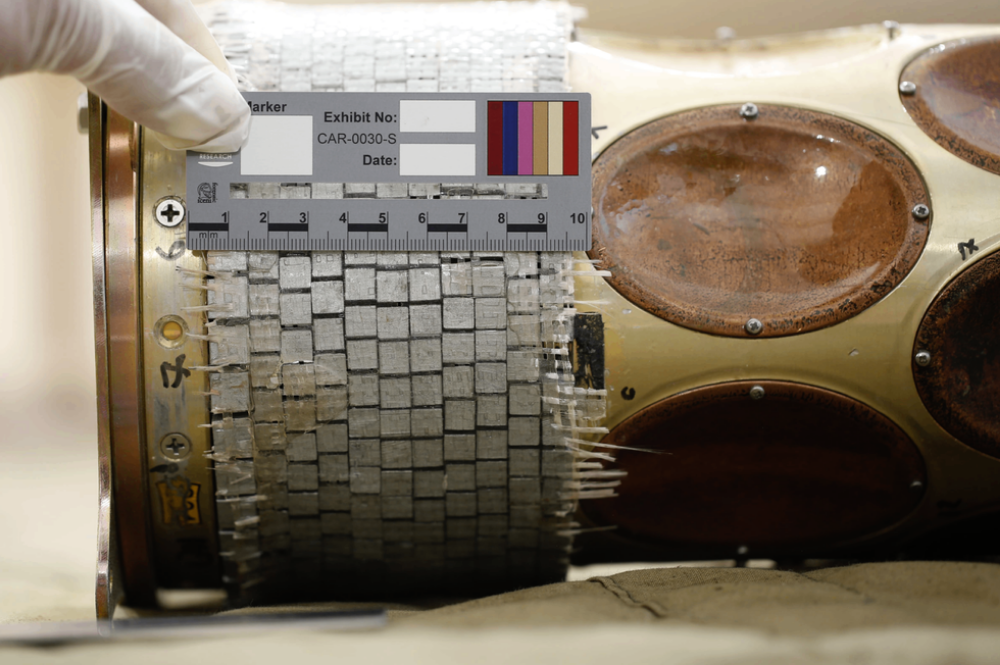
There are two pre-serrated fragmentation matrixes, each made of 11 layers of fragmentation cubes, around the forward and rear sections of the warhead; these matrixes are designed to generate an additional radial fragmentation effect for soft-skin targets
The third element consists of rows of metal cubes packed around the explosive, a new twist on an old idea. Back in 1787, British artillery officer Henry Shrapnel noted that the new, explosive bursting shells had little effect on enemy troops, as the blast quickly dissipated with distance. He upgraded the rounds by packing them with a layer of lead musket balls. Shrapnel’s invention was far more effective as an anti-personnel weapon, throwing lethal projectiles out to a greater distance than the blast reached. The new weapon was dubbed the “Shrapnel shell,” and the metal projectiles were called “shrapnel.”
Since then, most artillery shells and bombs have been designed with a metal case, which disintegrates to produce fragments, or with pre-made shrapnel. Spleeters says the fragmentation matrix in the Shahed-131 was not made to the same standard as the rest of the device.
“The fragmentation matrixes appear to be a later addition, with poor fit, finish, alignment, and quality,” says Spleeters.
U.S. weapon engineers upgraded the original Hellfire missile in a similar fashion. Originally designed to tackle Soviet tanks, the Hellfire was used in Afghanistan and Iraq against insurgents on foot and in pickup trucks. A fragmentation sleeve enhanced its effectiveness against personnel and light vehicles.
The metal cubes in the Shahed-131 are about half-an-inch on a side. This is much bigger than anti-personnel shrapnel, and suggests that they are intended to inflict damage on larger and more substantial targets—such as electrical machinery.
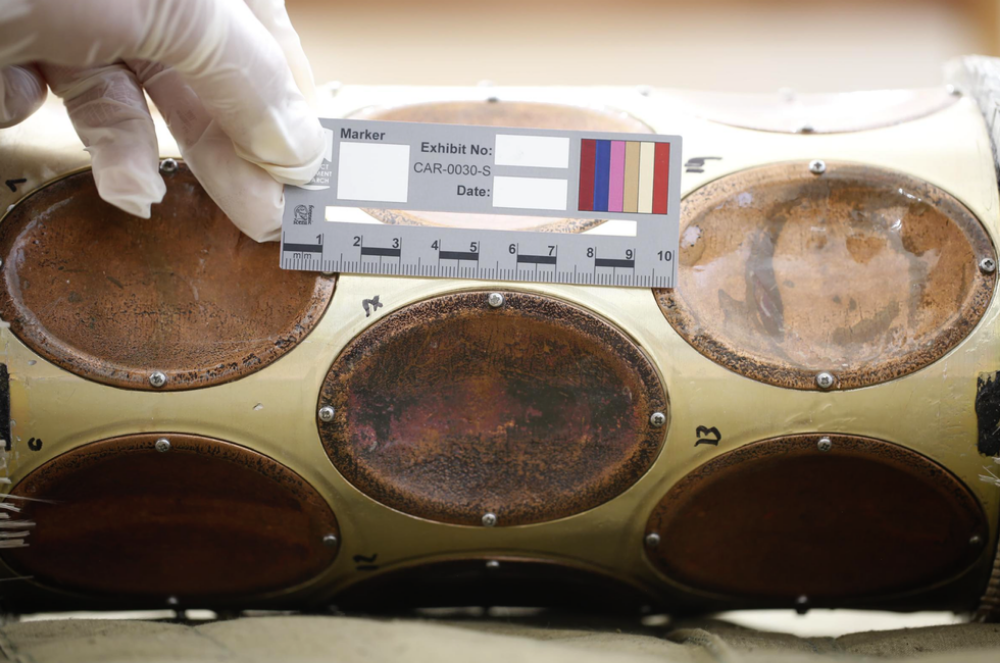
There are 18 smaller-shaped charges around the circumference of the warhead to generate a secondary radial anti-armor effect
Finally, the new warhead also has 18 shallow metal ovals arranged in rows around the outside; Spleeters declined to comment on the specific metal inside, but warheads are typically made of very dense metals like tungsten or tantalum. These resemble the HEAT element, but are subtly different. When the warhead detonates, rather than being deformed into a narrow jet, each lens is compacted into an aerodynamic slug known as an “Explosively Formed Projectile,” (EFP) and thrown outward at high speed.
While the jet from a shaped charge only travels a few meters, EFPs retain their effectiveness for tens or hundreds of meters. An EFP has a larger diameter than a shaped-charge jet, and while it has less penetrating power, it can do more damage because it leaves a bigger hole. EFPs are rarely seen in modern warheads, but are effective in niche roles where maximum penetration is not needed. For example, the Swedish-made BONUS artillery rounds supplied to Ukraine each release two EFP submunitions, which scan the ground below for vehicles. When a submunition locates one, it fires its EFP downward through the thin top armor, taking advantage of the EFP’s greater range.
Iran has considerable experience in EFP design. When U.S. forces in Iraq fielded Mine Resistant Ambush Protected Vehicles with reinforced undersides to protect them from buried mines, the Iranians started supplying insurgents with EFP mines, which waited by the road and fired sideways into passing vehicles.
The Shahed-131’s 18 EFPs produce 360 degrees of destruction, radiating outward from the warhead. Similar arrangements appear in anti-ship missiles, including the Kormoran and the Chinese YJ-8, the idea there being that the missile explodes inside a ship, and the EFPs punch through bulkheads, possibly holing the vessel, causing casualties or detonating stored fuel or ammunition.
The multiple modes of attack make the Shahed-131 highly effective against electrical transformers, substations, and switching apparatuses.
The blast damages machinery, breaks connections, and brings down wires; it may be the most visible, but least significant, aspect. The shaped charge will drill through anything in front of the Shahed, but unless it hits the right spot, this too may have little effect. The shrapnel and EFPs will inflict most of the damage, ripping through machinery and leaving a trail of twisted metal, which cannot be simply mended.
“Its design appears to serve the purpose for which it is frequently used in Ukraine—to target energy infrastructure, while hindering repair efforts,” says Spleeters.
Spleeters could not say how much of the warhead was the original design, and how much it has been customized for this specific mission, beyond noting that the crude fragmentation matrix looks like it was added afterward.
“We currently don’t have a sample big enough to be able to say there is a basic warhead and then modifications,” he says.
A Ukrainian team, which examined a Shahed-131 in September, reported a fragmentation sleeve, but no EFP or shaped charge. Spleeters also notes that there may also be a version without the fragmentation matrix and EFPs, but with just the forward-facing shaped charge. And CAR has previously seen another version of the Shahed-131, which had a warhead with a thick metal casing and a delayed fuse. This was the anti-structure version, made robust enough to penetrate a wall before exploding inside.
The Takeaway
Shahed one-way attack drones are cheap, and Russia is reportedly acquiring thousands of them. Tweaking the warhead may make them significantly more effective against specific targets, such as buildings, people, tanks, or infrastructure.
All photos: Conflict Armament Research
Sources: Conflict Armament Research; Popular Mechanics;

